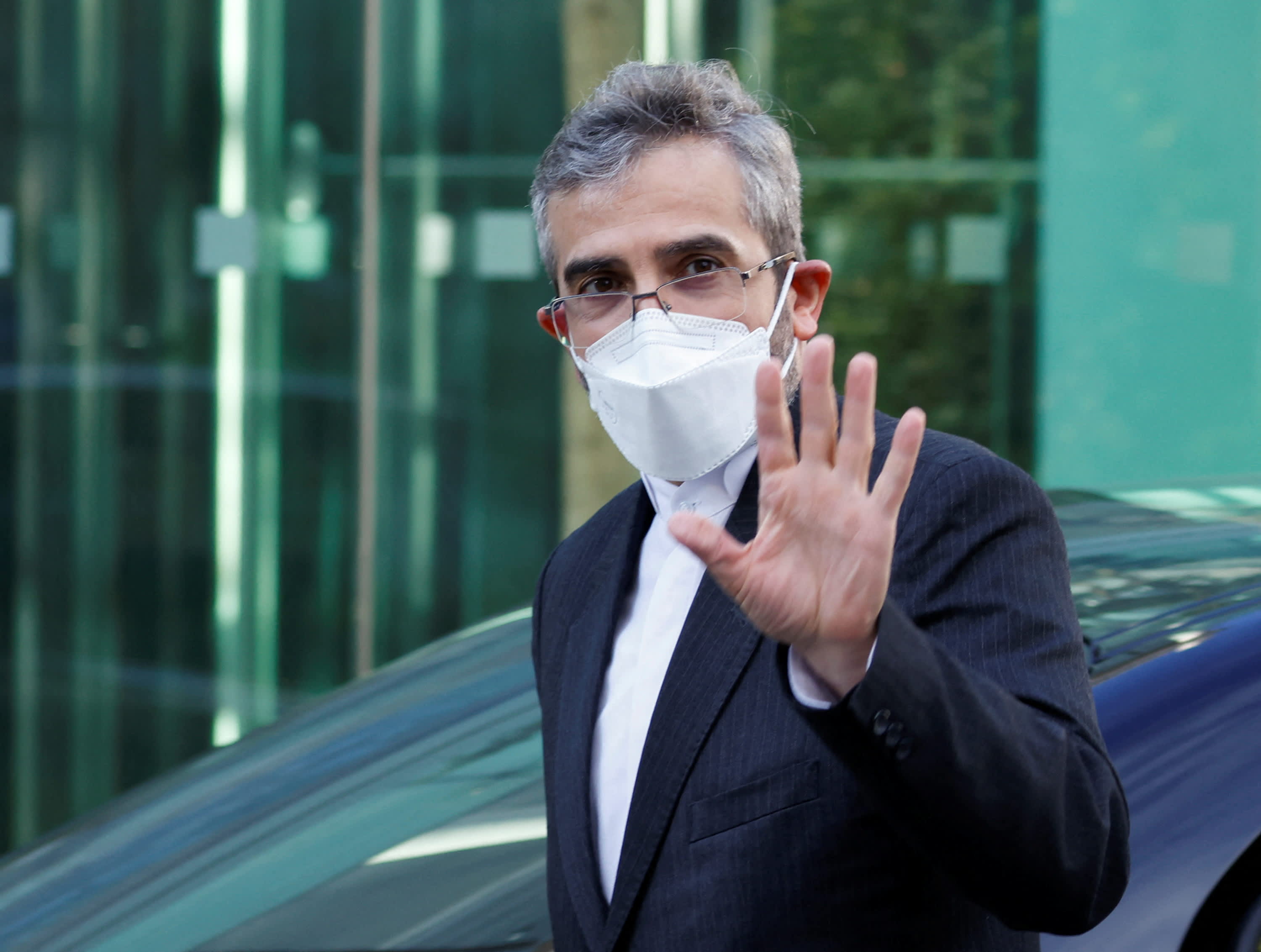
Iran’s chief nuclear negotiator Ali Bagheri Kani arrives at Palais Coburg where closed-door nuclear talks with Iran take place in Vienna, Austria, February 8, 2022.
Leonhard Foeger | Reuters
Negotiations aimed at reviving the 2015 Iran nuclear deal restarted in Vienna this week, more than ten months after they first began and weighed down by yet more uncertainty and mutual distrust.
And time is of the essence. With each passing week Iran’s nuclear capabilities grow, making a return to a deal less and less likely.
U.S. Special Envoy for Iran Rob Malley is in the Austrian capital for indirect talks mediated by European diplomats, since Washington and Tehran aren’t talking directly. The Biden administration believes a deal is in sight – but if nothing is reached within a few weeks, it could be too late.
“Our talks with Iran have reached an urgent point,” White House spokeswoman Jen Psaki told reporters on Wednesday.
“A deal that addresses the core concerns of all sides is in sight. But if it’s not reached in the coming weeks, Iran’s ongoing nuclear advances will make it impossible for us to return to the JCPOA,” she said, referring to the agreement’s formal name, the Joint Comprehensive Plan of Action.
In 2018, the administration of former President Donald Trump unilaterally ditched the deal – which had lifted economic sanctions on Iran in exchange for curbs to its nuclear program. Since then, Tehran has made significant progress in terms of its nuclear activity, increasing uranium enrichment and stockpiles far beyond the parameters of the 2015 agreement.
This means it has shrunk its “breakout time,” or the amount of time it would take to be able to build a nuclear bomb. Iran’s leaders say the moves are in response to U.S. sanctions, reimposed by Trump, that have crippled its economy.
In need of economic relief, Iran agreed to engage in six rounds of indirect talks revived by the Biden administration between April and June of 2021. But the election of hardline anti-Western cleric Ibrahim Raisi to the Iranian presidency in late June put the talks on hold until November. Since then, they have become bogged down in disagreements over previous negotiations, and no significant progress has been made on solving the remaining points of contention.
And those points of contention are, so far, looking very difficult to surmount. The U.S. is demanding a reversal of Iran’s nuclear advancements, and Iran wants sanctions lifted – but both sides want the other to make the first move. And given that the Biden administration can’t guarantee a new deal will be ironclad, considering how quickly the Trump administration tore up the original one, trust is essentially nonexistent.
“The biggest current obstacle is lack of trust particularly on the Iranian side,” said Ryan Bohl, a Middle East and Africa analyst at Rane Risk Intelligence. This means the Biden administration could have to make greater concessions to Iran if it wants a deal to happen.
“The U.S. is accepting that it needs to go further this time to rebuild a sense of Iranian trust and moreover to accept the political realities that have come with President Raisi’s election,” Bohl told CNBC. “The hardliners were proven right by Trump’s withdrawal from the treaty, and that vindication makes it more difficult for the U.S. to convince that same group that’s now in power that a nuclear deal is worthwhile.”
New ballistic missiles
At the same time, Iran has been posturing and sending the message that it’s a force to be reckoned with. It revealed a new ballistic missile on Wednesday, as its top security official Ali Shamkhani said that in the U.S., “there is no coherence…to make political decisions in the direction of advancement” of the deal.
“The ballistic missile unveiling I tend to think of as a relatively routine demonstration of military technology that’s fitting into their wider strategy of showcasing how much trouble they can cause if military escalations begin,” Bohl said.
Iranian Armed Forces Chief of Staff Major General Mohammad Bagheri and IRGC Aerospace Force Commander Amir Ali Hajizadeh walk during the unveiling of “Kheibarshekan” missile at an undisclosed location in Iran, in this picture obtained on February 9, 2022.
IRGC | WANA | via Reuters
The talks also come after several weeks of drone and missile attacks on the United Arab Emirates by Yemen’s Houthi rebels, who are supported by Iran.
The Biden administration “has essentially laid its cards on the table,” political risk firm Eurasia Group wrote in an analyst note Wednesday.
“Washington is willing to accept a deal with substantially weaker nuclear constraints on Iran compared with the 2015 agreement, in terms of breakout time, and to offer Iran sanctions relief or assurances beyond the scope of JCPOA … Washington’s argument is essentially that some limits are better than none,” it said.
Tehran’s uranium stockpiles have been enriched to near-weapons grade, and its increasingly advanced centrifuges mean it is reaching a point of no return that could soon render the original JCPOA’s non-proliferation benefits futile.
Over the first year of Biden’s term, “Tehran built significant leverage in the form of irreversible nuclear knowledge without having to pay a price,” said Behnam Ben Taleblu, a senior fellow at the Foundation for Defense of Democracies in Washington D.C. “This success will continue to tempt Iran to escalate further or get a deal more on its terms.”
Importantly, there is also very little appetite in Washington for escalation with Iran, and Biden is keen to reverse a major foreign policy legacy of Trump’s by bringing back the deal. Still, continued deadlock could lead the administration to reverse course and take more aggressive measures, though it has not specified what those measures may be.
“Put differently,” Ben Taleblu said, “every impression out of Vienna thus far is that Iran remains in the driver’s seat.”




